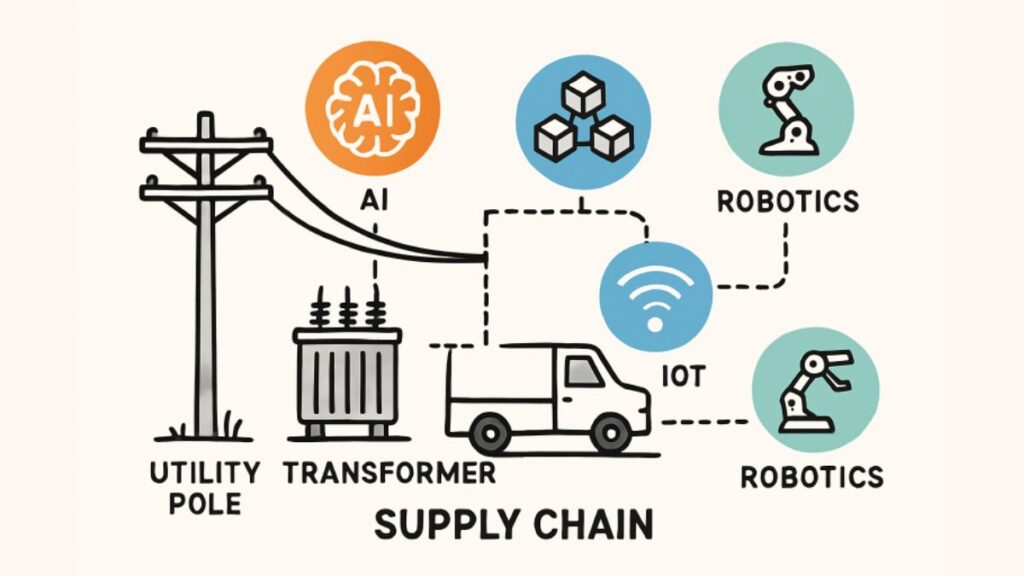Today’s supply chain strategies emphasize efficiency, transparency, and environmental responsibility. Embracing tools like AI, blockchain, IoT, and robotics is not just about keeping pace with industry standards—it’s about future-proofing utility operations against disruptions and shifting consumer expectations. Utilities can deliver reliable, high-quality services with the right partners and resources despite challenging conditions.
Utility supply chains are rapidly transforming, adopting new technologies and operational methods to stay competitive, sustainable, and resilient. As the market evolves and technologies advance, utilities find ways to innovate and adapt, drastically improving their supply processes and service delivery. Many organizations rely on specialized services such as lineman supply to support critical infrastructure, highlighting the essential role of modern supply networks in operational success.
AI and ML Integration
Artificial Intelligence and Machine Learning are revolutionizing the utility sector by enhancing supply chain planning and execution. Utilities can forecast demand accurately, streamline inventory management, and optimize asset deployment using predictive analytics and adaptive algorithms. This data-driven approach extends to intelligent logistics and maintenance scheduling, automating critical decisions and improving efficiency. AI and ML are crucial for operational resilience and cost-effectiveness.
Blockchain for Transparency
Blockchain is revolutionizing supply chain practices by providing a decentralized, immutable ledger for utilities to track and verify components. Its key advantage is its ability to store tamper-proof records, creating an auditable trail from sourcing to installation. This is especially useful in energy industries, where regulatory compliance, quality assurance, and consumer trust are crucial. Blockchain also enables faster response to safety issues and product recalls, reducing administrative overhead and improving procurement processes.
IoT in Asset Management
The Internet of Things (IoT) has revolutionized asset management in utility supply chains by enabling real-time monitoring and predictive maintenance. IoT devices in grid infrastructure, meters, and vehicles collect data on parameters like temperature, vibration, energy usage, and positioning, enabling quick identification and response to malfunctions, inefficiencies, and security threats. This enhanced connectivity speeds up repairs, reduces downtime, and lowers maintenance costs.
Sustainability Practices
Environmental stewardship is now central to utility supply chain strategy. Companies are adopting sustainability measures to comply with evolving regulations and appeal to an increasingly eco-conscious market. The move toward a circular economy model—focusing on recycling, reuse, and waste reduction—has become widespread, influencing every aspect from vendor selection to end-of-life asset handling.
Green procurement, carbon tracking, and renewable resource sourcing minimize utilities’ ecological footprints while maintaining cost efficiency. These efforts not only help meet corporate responsibility goals, but they also strengthen brand loyalty among communities and customers. The growing urgency around climate change and resource conservation ensures that sustainable supply chain practices will remain prominent across the industry.
Robotics and Automation
Advanced robotics and automation are revolutionizing utility supply chains, boosting productivity and reducing human worker risk. Solutions like automated guided vehicles and robotic process automation software provide round-the-clock efficiency and operational accuracy. Investing in robotics is driven by rising labor costs and global workforce shortages, ensuring faster order fulfillment, safer field operations, and scalable logistics. The trend towards smart automation is expected to intensify, promoting innovation and operational excellence in utility supply chains.






